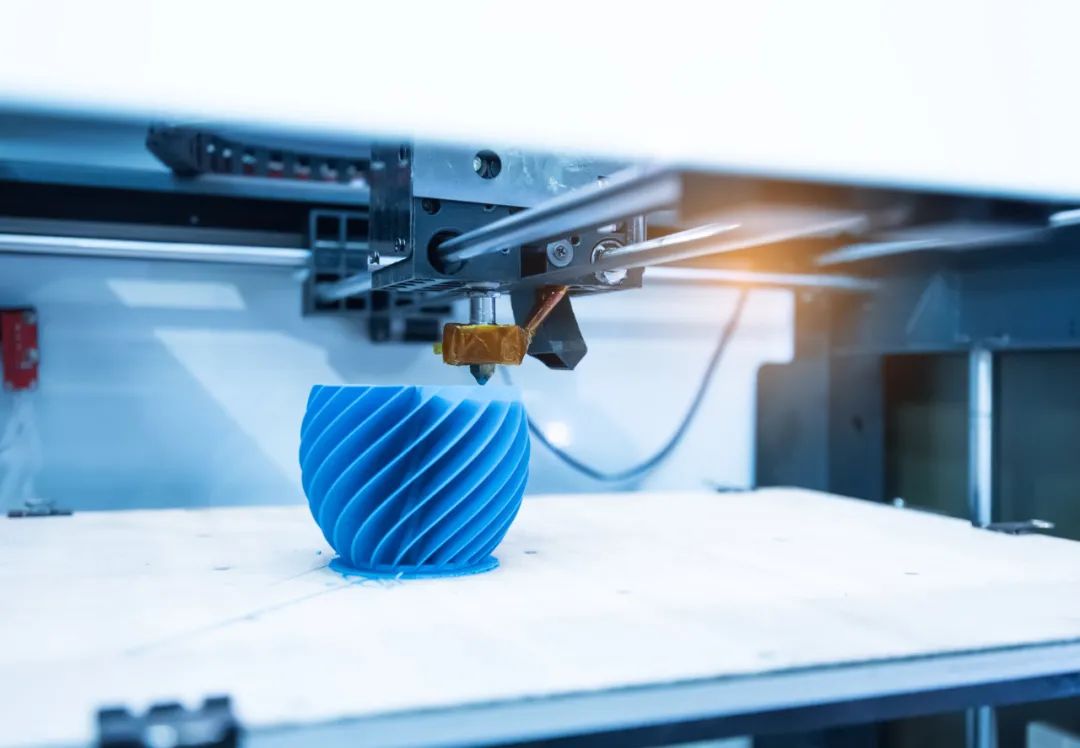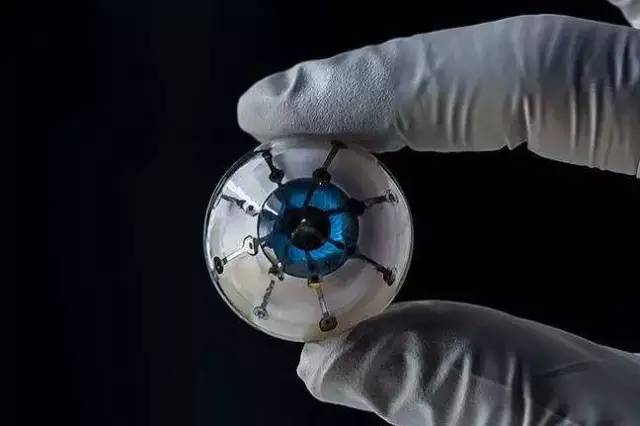
3D printing technology is also known as additive manufacturing, a technology that builds real three-dimensional objects by layering adhesive materials based on digital model files.. As one of the “12 disruptive technologies that will determine the future economy” and the engine of the third industrial revolution, 3D printing marks a significant industrial transformation from traditional manufacturing to intelligent manufacturing, triggering a new wave of technological revolution.
Compared to traditional manufacturing technologies, 3D printing technology features characteristics such as “no molds, reduced waste, and lower inventory,” optimizing structures, saving materials, and conserving energy in production, greatly improving manufacturing efficiency and realizing the innovative concept of “design-driven manufacturing.”

Looking back at the history of 3D printing technology, it dates back to 1984 when American scientist Charles Hull invented the stereolithography appearance technology (SLA). It has gradually developed into technologies such as selective laser sintering (SLS), selective laser melting (SLM), and three-dimensional printing and gluing (3DP).
Since entering the 21st century, 3D printing technology has made new breakthroughs, officially entering a phase of rapid development globally, with various innovative sub-techniques emerging under the subdivision of major technologies to meet specific industry needs and effectively complement traditional manufacturing.
Classification of 3D Printing Methods
1. Material Extrusion
Material extrusion
Deposits materials selectively through nozzles or openings. For example, fused deposition modelling (FDM) is the most intuitive and common printing method. During printing, the equipment heats and melts filament thermoplastic materials, extruding and selectively depositing the material onto a platform through a nozzle with fine tips, forming a layer cross-section after cooling, and printing layer by layer until a complete entity is formed. The printing materials mainly include polymers and plastics, such as polylactic acid (PLA), thermoplastic polyurethane elastomer (TPU), and acrylonitrile butadiene styrene (ABS).
-
Advantages: Low cost for equipment and materials, wide material range, high product strength.
-
Disadvantages: Lower printing accuracy, rough surface finish of printed samples.
2. Vat Photopolymerization
Uses specific wavelengths of light to selectively cure liquid polymers. The materials used in this technology are photosensitive resins, which undergo a phase transition from liquid to solid under light exposure, thus achieving the printing process. Depending on the type of light source, irradiation method, and forming method, it can be divided into stereolithography appearance (SLA) and digital light processing (DLP), each with different principles and printing processes. Among them, SLA uses laser point scanning of the liquid resin surface, curing point-line-surface sequentially to complete a layer’s formation, combined with the movement of the forming platform to layer upon layer to form a three-dimensional entity. DLP, on the other hand, uses full-area exposure for layer formation, with the light source mostly being LED ultraviolet light, and the exposure patterns for each layer generated by digital dynamic mask chips or spatial light modulators.
-
Advantages: High processing accuracy, smooth surface finish of printed products, high efficiency of full-area exposure forming. -
Disadvantages: Limited material range, weaker material properties.
Video 1: Stereolithography
3. Directed Energy Deposition
Utilizes focused thermal energy to melt materials in a process of immediate melting and deposition. It mainly includes laser-assisted powder deposition (LENS, LBMD, LSF) and electron beam direct manufacturing (EBDM), often used for building or repairing existing structures. The process involves a laser beam or other energy sources creating a melt pool in the deposition area and moving at high speed, with nozzles feeding filament or powdered materials (such as titanium and cobalt-chromium alloys) into the high-temperature zone, which are heated to their melting points and deposited layer by layer. Nozzles or worktables are mounted on highly movable arms, allowing for flexible movement.
-
Advantages: No need for support, high processing flexibility, efficient preparation and repair of components.
-
Disadvantages: Surface processing precision is limited, formed samples require further processing (e.g., milling), challenging to repair structurally complex parts.
Video 2: Laser-assisted Powder Deposition
4. Material Jetting
A three-dimensional evolution of 2D inkjet printers. Material jetting can be divided into continuous material jetting (CMJ), nanoparticles jetting (NPJ), and drop on-demand (DOD). Its basic principle is to accurately position the jetted material on the printing platform using charged deflection plates and electromagnetic fields, and to cure the material using ultraviolet light sources. Material jetting is very similar to the previously mentioned stereolithography (SLA), except that the former can simultaneously jet hundreds of tiny droplets, while SLA selectively cures point by point in a whole vat of resin. The jetted photosensitive droplets include polymers and plastics, such as acrylonitrile butadiene styrene (ABS) and polypropylene (PP).
-
Advantages: Achieves highly precise full-color rapid printing, enhancing the aesthetic quality of prototypes and final components.
-
Disadvantages: Limited material range, high cost, requires post-processing to remove excess material.
5. Binder Jetting
Also known as three-dimensional printing and gluing (3DP), it achieves powder forming through binder jetting. The main process involves filling containers with powdered materials like ceramics or polymers, using inkjet print heads to spray binders into the powder, similar to how sand mixed with water forms a stronger structure, where a layer of powder binds in selected areas, repeating this process so that the next layer of powder combines with the previous layer through the binder’s penetration, stacking layer by layer to form a whole. When using metals and ceramics, high-temperature sintering is required to remove the binder and achieve metallurgical bonding between powder particles, giving the final product a certain strength and density.
-
Advantages: High forming efficiency, can print different colors in batches, no need for support structures.
-
Disadvantages: High roughness, lower density of formed parts, requires post-processing such as debinding and sintering for metals and ceramics, and may need to add wax for polymers to increase structural strength.
Video 3: Binder Jetting
6. Powder Bed Fusion
This is another powder bed-based method mainly used for printing metal parts. Unlike previously mentioned printing methods, powder bed fusion does not involve depositing binders for printing; the main representatives include selective laser sintering (SLS), selective laser melting (SLM), and electron-beam selective melting (EBSM). The powder bed fusion process generally involves using a powder roller to evenly coat the printing platform’s surface with powder materials stored in hoppers and reservoirs, then using high-power lasers or electron beams in a vacuum environment to melt and sinter the powder to bind them together, followed by coating another layer of powder for the next layer of sintering until a complete entity is formed. Among them, electron-beam selective melting preheats the powder bed, with the chamber temperature reaching thousands of degrees, significantly reducing residual stress in formed parts; SLS requires additional binders, such as low-melting-point metals or resin materials.
-
Advantages: High precision, can print various materials including metals (such as titanium, aluminum, copper, stainless steel, and high-temperature alloys), ceramics, and nylon.
-
Disadvantages: High cost, prone to warping when printing large objects, slower speed.
Video 4: Selective Laser Sintering
7. Sheet Lamination
Combines materials after laser cutting with adhesives or welding to form solids. Unlike other previously listed process methods, sheet lamination printing technology can use materials other than metal sheets, even paper and almost any other material that can be rolled. Sheet lamination mainly includes layered object manufacturing (LOM) and ultrasonic additive manufacturing (UAM). LOM uses glue to bond multiple layers of paper and cuts them with sharp knives without the need for heating or melting. Each paper’s cutting method is slightly different. UAM uses ultrasonic welding machines to bond metal sheets or strips, with each metal layer being rolled onto the growing structure, the biggest technical advantage being low temperature, suitable for temperature-sensitive low-melting-point materials.
-
Advantages: Fast forming speed, high precision, minimal warping and deformation.
-
Disadvantages: Poor inter-layer bonding, significant anisotropy in the structural strength of formed samples, low material utilization, can only produce simple structural components.
Driven by substantial R&D investments in the scientific and industrial sectors, 3D printing enhances the manufacturing industry’s capabilities with innovation as its core, penetrating deeply and broadly from the application end to empower and create revolutions across various downstream industries, covering fields including aerospace, military, automotive, shipping, energy, healthcare, cultural creativity, and construction.

In the aviation and energy sectors, recently, Arris Composites in the US collaborated with Airbus to make strides in the 3D printing carbon fiber composite materials market for mass production, creating lightweight cabin supports; Solvay partnered with OEM 9T Labs to introduce 3D printed carbon fiber reinforced plastic components into mass production for medium and small-sized components needed in aviation, automation, and oil and gas industries.
Looking back domestically, the 3D printing industry is experiencing a rapid development opportunity under the guidance of “Made in China 2025,” contributing to the rapid development of domestic commercial rockets. In February 2021, Chongqing Yiling Space first used 3D printed attitude control power system products for flight, and in July 2021, the deep blue aerospace liquid rocket manufactured with 3D printing successfully completed a low-altitude vertical recovery flight test. It is evident that 3D printing has given rise to a new track in rocket manufacturing and is gradually becoming a crucial supporting technology in the rocket manufacturing process.
In the development of manufacturing medical prosthetics, the advancements are not limited to orthopedics, prosthetic ears, etc., but also include ocular prosthetics. In November 2021, breakthroughs in clinical applications of 3D printed prosthetic eyes by the Fraunhofer Institute in Germany indicate a trend toward the commercialization of 3D printing for medical prosthetics.
As demand continues to be explored, policies remain consistently guiding, and industry standards gradually become standardized, the breadth and depth of 3D printing applications will further accelerate expansion.

Since its inception in the 1980s, 3D printing technology has only a short history of over thirty years, yet it is leading a global manufacturing revolution. As a representative of “Internet + Intelligent Manufacturing”, it almost perfectly meets the requirements for customization and mass production, showcasing infinite creativity in numerous fields. The 3D printing industry is entering a growth phase, with global 3D printing output expected to reach $37.2 billion by 2026, and global competition has begun. However, how to achieve precision, intelligence, generalization, and convenience remains a significant challenge for 3D printing technology, and we look forward to milestone changes in future intelligent manufacturing through its continuous improvement and refinement.
1. Jake Port. How does 3D printing work?, cosmosmagazine, 7 December 2021
2. “3D Printing and Industrial Manufacturing” — Machinery Industry Press
3. 2021 3D Printing Industry In-Depth Research Report — Western Securities
Reproduced content only represents the author’s views
Does not represent the position of the Institute of Physics, Chinese Academy of Sciences
Source: Advanced Manufacturing
Editor: Garrett
Recent Popular Articles Top 10
